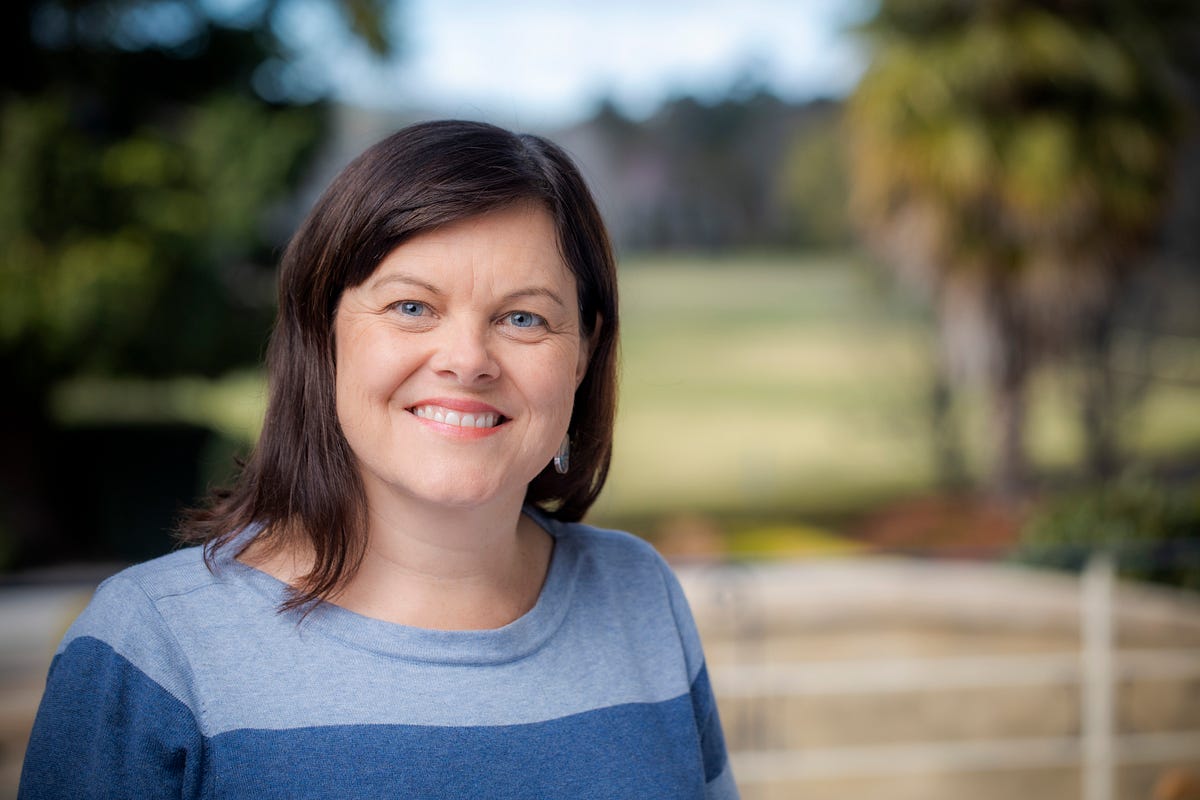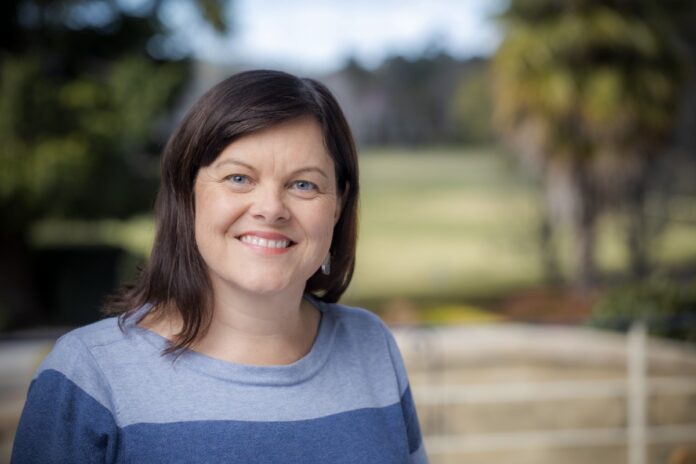Social Impact Heroes: How Kirsten Armstrong and The Fred Hollows Foundation are helping to end avoidable blindness

I visited Pakistan to meet some of our partners firsthand. At one hospital, I met an eye doctor who I’d met several years earlier. We had supported her to access pediatric training, so she could provide specialist eye care for children.
That extra training meant she’d been recognized as a more senior doctor and had been offered a leadership position in the hospital, meaning she now had a say in a range of hospital decisions.
Being passionate about ensuring women and children received the care they needed, she was taking the opportunity to use her voice to get the resources needed.
As part of my series about “individuals and organizations making an important social impact”, I had the pleasure of interviewing Kirsten Armstrong, Director of Knowledge and Innovation at The Fred Hollows Foundation.
As the Director of Knowledge & Innovation at The Fred Hollows Foundation, Kirsten leads a team of doctors, economists, researchers and innovators to discover and harness what works to end avoidable blindness and to extend the Foundation’s impact.
Bringing business acumen to international development is one of Kirsten’s key passions, backed by training as an actuary and economist.
Last year, Kirsten led the launch of one of the world’s first development impact bonds and launched a new social enterprise to attract investors to eye health.
In the two decades prior to joining Fred Hollows, Kirsten delivered over 100 consulting assignments in more than 20 countries working with governments, health care providers, health funders and the insurance sector, to plan, reform and evaluate their health and social insurance systems, supporting major health reforms in Australia, New Zealand and Hong Kong, and insurance system reforms in Russia, Estonia, and Mongolia.
She is a Board Director of Northcott, one of Australia’s most innovative providers of disability services, a former Partner of PwC, and currently serves on the Health Practice Committee of Australia’s Actuaries Institute.
Thank you so much for doing this with us Kirsten. Can you tell us a story about what brought you to this specific career path?
It was the death of a colleague’s mother from kidney failure that sparked my passion to build stronger health systems for those most in need. It was 1999 and I had been working in Russia for three years to overhaul the retirement income system.
As an actuary, I wanted to use my skills to create financing systems that provide protection for the poor and had already advised governments in five countries on how to improve their age pension and retirement income systems. But I was shocked to learn that my colleague’s family was bankrupted in just a few days after paying thousands of dollars to access one of the few dialysis machines in Moscow. Retirement incomes would be irrelevant if people couldn’t meet their immediate healthcare needs and so, I decided to focus on health.
I returned to Australia in 2002 to learn as much as I could about health from the experts. PwC’s actuarial team was Australia’s leading adviser to health and injury compensation schemes, with a philosophy to make schemes sustainable, not by cutting costs, but by focusing on early interventions that achieved better outcomes and saved money. Over the next 12 years, first at PwC and then at Three Rivers Consulting, I advised governments, healthcare providers and insurers on how to make their systems more effective and affordable, working on some of the biggest reforms in Australia’s healthcare system, and joining the board of Northcott, one of Australia’s most innovative disability providers.
My thoughts returned to global matters and I joined The Fred Hollows Foundation in 2014, with a plan to bring a different set of skills to international development. I now lead the Knowledge and Innovation team. Put simply, that means using research and innovation to discover new ways to create more impact from our eye care programs, to help in the fight to end blindness.
Can you share the most interesting story that happened to you since you began leading your company or organization?
Recognizing that women comprise two-thirds of those who are blind, The Foundation is investing in solutions that bring more women into leadership roles in eye care and see more women get treatment.
Four years after we launched our first gender strategy, I met a senior eye doctor in one of Bangladesh’s largest hospitals. The doctor enthusiastically introduced his 5 new trainees to me.
‘Four of them are women’, he proudly said.
‘Fred Hollows staff are always talking about women, I thought you’d be pleased that we’re training so many women.’
More than half of eye patients at the tertiary hospital are now women, a sign that our efforts are working!
Can you share a story about the funniest mistake you made when you were first starting? Can you tell us what lesson you learned from that?
I am a strong believer in using evidence to make critical decisions and used to think that the most learned person in the room would have the best ideas, but I’ve learned the hard way that’s not necessarily the case!
For several years, we’ve been trying to grow the number of people from remote areas who access eye care services, relying on ideas from the economic literature, like removing financial barriers, offering cash incentives, building community knowledge and so on.
These approaches can be complex to implement, expensive and have mixed results.
So last year, we tried something different.
We asked patients from remote islands in the Philippines to join us to co-create a solution.
The solution they came up with was simple. We would begin scheduling their appointments in the morning so they could get to-and-from the island in one day without having to stay overnight, and we would implement a simple queueing system so they knew how long they needed to wait.
This was much easier and less complicated than any option we thought of!
Can you describe how you or your organization is making a significant social impact?
At Fred Hollows, we’re continually innovating to extend our impact in the fight to end avoidable blindness. In 2015, I started a small research and innovation team to trial new approaches to some of the biggest challenges in eye care. In Ethiopia, we’re successfully rolling out new approaches to teach facial cleanliness that can prevent trachoma infections; in Australia and Bangladesh, we’re piloting artificial intelligence to identify diabetic eye disease in Indigenous patients, meaning doctors can spend less time diagnosing patients and more time treating them.
To reduce reliance on donations and bring investors to eye care, I led efforts to launch one of the world’s first development impact bonds, the Cameroon Cataract Bond, which will help a new eye hospital in Cameroon become self-sustaining and deliver 5,000 cataract surgeries every year.
In Bangladesh, we worked with a small group of garment factories to offer eye care to their largely female workforce. Other garment factories have been impressed by the increase in productivity that resulted and is looking to replicate the approach.
Can you tell me a story about a particular individual who was impacted by your cause?
I visited Pakistan to meet some of our partners firsthand. At one hospital, I met an eye doctor who I’d met several years earlier. We had supported her to access pediatric training, so she could provide specialist eye care for children.
That extra training meant she’d been recognized as a more senior doctor and had been offered a leadership position in the hospital, meaning she now had a say in a range of hospital decisions.
Being passionate about ensuring women and children received the care they needed, she was taking the opportunity to use her voice to get the resources needed.
Are there three things the community/society/politicians can do to help you address the root of the problem you are trying to solve?
Many countries are introducing new ‘national health insurance schemes’ that will raise more money for healthcare. Raising more money for healthcare is a critical first step, but there are many other ways that governments can help ensure healthcare is available for all.
- Focus on costs. The World Bank estimates that 20% to 40% of healthcare costs are wasted due to poor procurement. If we can make ‘better buys’ and reduce this waste, then that means 20% to 40% more care without increasing taxes. In eye care, research shows that well-trained ophthalmic nurses can deliver routine cataract surgery of equivalent quality for a lower cost than doctors, but to do so in most countries would require governments to change regulations. The prices charged for Intraocular lenses — the lenses inserted in a patient’s eye during cataract surgery — vary enormously from country to country and patient to patient, but without a clear reason. Governments need to oversee the system carefully to ensure the prices charged are fair to keep the cost of services affordable.
- Focus on quality. Cataract surgery is one area where a system-wide approach to monitoring surgical quality is easy to implement and indeed has been proposed as a tracer indicator for surgical quality for the Sustainable Development Goals. But research shows cataract surgical quality remains poor in many cases and governments are yet to embrace a system-wide approach.
- Co-develop solutions with those excluded from healthcare. As our Philippines example shows, there may be simple, cost-effective ways to ensure the poorest and most marginalized are able to access health care and no one is left behind.
You are a person of enormous influence. If you could inspire a movement that would bring the most amount of good to the most amount of people, what would that be? You never know what your idea can trigger.
I’d like to teach everyone one simple question to help make important decisions: ‘What does the evidence say?’ So many times in society I see poor decisions made because people ignore the data, instead of relying on emotion, anecdote and biased information from lobbyists. If decision-makers understood the evidence, we’d make far better decisions about how we allocate health resources for example, how we address climate change and so many other critical things. I realize ‘What does the evidence say?” isn’t quite as catchy as ‘What would Bowie do?’, but I’m working on it.
Can you please give us your favorite “Life Lesson Quote”? Can you share how that was relevant to you in your life?
‘When I’ve seen an opportunity, I haven’t sat down and called a committee meeting, we’ve gone and done it.’ Professor Fred Hollows.
This quote from Fred Hollows embodies my approach to getting things done; I’ve been described by some friends as a human ‘do-ing’ rather than a human be-ing. So be it if it means I have a chance to make a difference!
Is there a person in the world, or in the US whom you would love to have a private breakfast or lunch with, and why? He or she might just see this, especially if we tag them. 🙂
Mark Zuckerberg. Data from various studies in Asia shows myopia is growing dramatically, and social media platforms like Facebook are a key reason. Children are spending too much time indoors on screens and not enough time outdoors, so their eyes don’t grow properly.
The result is a higher chance of blinding conditions like glaucoma and cataract and in some studies 80% of school-leavers need glasses.
Social media platforms like Facebook could be part of the solution if we can work together to manage screen time and encourage more outdoor activity.
How can our readers follow you on social media?
Follow me on LinkedIn Kirsten Armstrong
Follow The Fred Hollows Foundation on –
Instagram: @fredhollows
Twitter: @FredHollows
LinkedIn: The Fred Hollows Foundation


